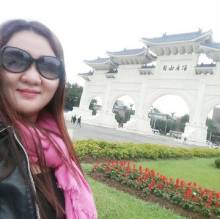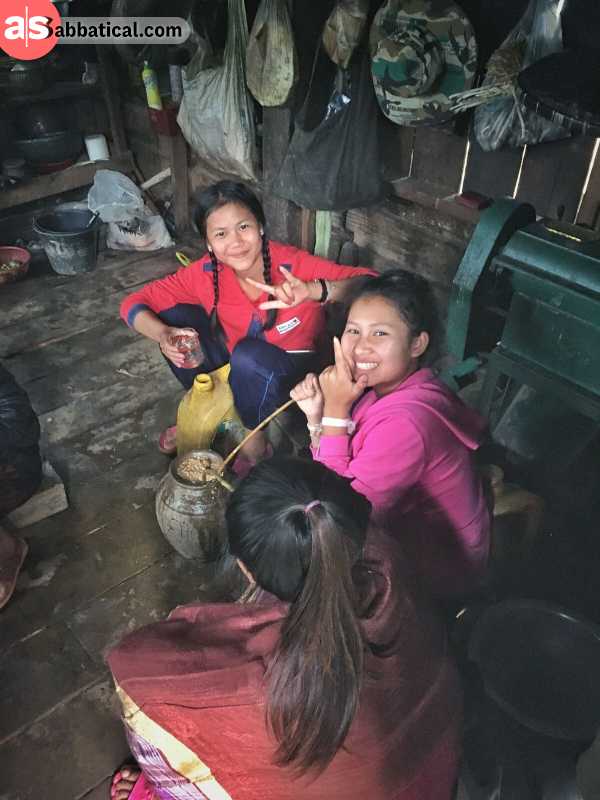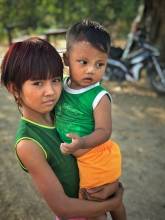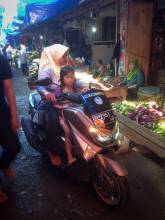Everything You Need to Know About Lao People
The Lao people are very diverse. In fact, Laos is home to more than 60 different ethnic groups, mostly belonging to the mountains and the countryside. In major cities like Vientiane and Vang Vieng, most of the people belong to the ethnic Vietnamese and Chinese groups. Historically, the Lao people are seen as ethnic Thai and consider themselves as Thais until after King Anouvong’s war of succession.
is home to more than 60 different ethnic groups, mostly belonging to the mountains and the countryside. In major cities like Vientiane and Vang Vieng, most of the people belong to the ethnic Vietnamese and Chinese groups. Historically, the Lao people are seen as ethnic Thai and consider themselves as Thais until after King Anouvong’s war of succession.
Check out the Postcards from Laos!
Laos is the only land-locked country in Southeast Asia and is often overlooked by most travelers in favor of its more popular neighbors, Thailand
and is often overlooked by most travelers in favor of its more popular neighbors, Thailand , Cambodia
, Cambodia , and Vietnam
, and Vietnam . But when you take time to discover the country and most especially its people, you’ll realize that Laos packs more than enough punch.
. But when you take time to discover the country and most especially its people, you’ll realize that Laos packs more than enough punch.
Some of the most beautiful ancient temples, ruins, breathtaking scenery, and of course, the friendly and welcoming Lao people make their home in Laos.
Brief History of Laos

The earliest recorded history of Laos is traced to the Kingdom of Lan Xang in 1353, which was established by Fa Ngum. Here’s a brief history of the country.
- In 1353, Fa Ngum established the capital in Luang Prabang and ruled the kingdom that covered much of the Laos and Thailand of today. During the 16th century, Fa Ngum’s successors helped to establish Buddhism as the country’s main religion. In the 18th century, the kingdom entered a period of decline due to conflicts with its neighboring countries of Burma, Vietnam, Thailand, and Cambodia’s Khmer Kingdom.
- During the World War II, the Japanese occupied the French Indochina including Laos. Eventually, the Japanese surrendered and Laos was declared independent. However, in early 1946, French troops invaded the country again and conferred limited autonomy on Laos, and an election was held for a constituent assembly. Eventually, in the year 1949, France
 formally recognized Laos’ independence within the French Union and the country remains a member until 1953.
formally recognized Laos’ independence within the French Union and the country remains a member until 1953. - In 1961, the Second Geneva Convention was held which provided the independence of Laos, although it was later brought down during the Vietnam War. Vietnam has conquered some lands in Laos during the war, and the country was heavily bombed.
- In 1975, the king was forced to abdicate his throne, and thus, the Lao People’s Republic was established.
- Nowadays, French colonial influences are still evident in Laos through the various historical sites in the country. You can find Buddhist temples all over the place, and some of the traditional Laos architecture is greatly influenced by Thai, Chinese, and Vietnamese culture.
Laos Culture

The Laotian culture is greatly influenced by Buddhism, which also plays an essential role in the country’s music, arts, and literature. Here are some things to know about the Laos culture:
- Buddhism plays an integral part in the Laos lifestyle. Most of the important events and ceremonies are also centered on Buddhism. Every day, the Laos people can be seen visiting temples to pray and to give offerings and alms to monks.
- The ethnic minorities of Laos also play an important role in the country’s culture. Although around 60% of the Lao people belong to the ethnic groups, there are currently more than 60 other ethnic groups in the country. Of all these ethnic groups, the Hmong hill tribes are growing in importance. A big percentage of the ethnic groups were persecuted during the Vietnam War for helping the United States while others decided to move to America. Thus, there are currently more than 200,000 Lao people living in the United States.
- One of the most significant traditions in Laos is known as the baci. This ceremony was already prevalent in the country even before the arrival of Buddhism in Laos. It’s held to enrich the spirit and usually requires tying white string in the wrists. Nowadays, baci ceremonies are being held for a wide variety of events that include weddings, birthdays, etc.
- When visiting the country, it’s important that you respect its culture and tradition. Thus, backslapping, shouting, and public displays of affection should be avoided, as these are considered impolite.
- Like other Buddhist countries, the head is considered the holiest part of the body while the feet is the least important. Touching someone in the head or pointing towards people using the feet are considered rude in Laos.
- When entering temples and visiting local houses, visitors are expected to remove their shoes.
The Lao People

Laos is one of the lowest populated countries of Southeast Asia, at 19 people for every square kilometer.
There are currently an estimated 6 million Laos people that are divided into more than 60 different ethnic groups. Here are some interesting facts about the Lao People:
- The Lao Loam tribe comprises 68% of the entire population, and they live in the lowland plains, at the fertile land near the Mekong River. Meanwhile, the Lao Thing dwell in the mountainous slopes of the country, and they make up 22% of the overall population. The Lao Soung, which consists of the Yao and Hmong tribes, make up 9% of the country’s population, while the remaining 1% is made up of ethnic Chinese and Vietnamese that live mostly in the big cities, including Vientiane, the Laos capital city.
- Just like the Laos lifestyle and culture, the Laos language is almost similar to Thai. There are more Lao speakers in the northeastern border of Thailand than there are in Laos itself. Laos and Thai language are both tonal and very similar that Thai TV shows have become significantly popular among the Lao people.
- The Lao greeting is known as the nop, where locals greet each other in a prayer-like position, similar to Thais. The younger person or anyone with a lower status is expected to nop to the elder or someone in the higher social status. Recently, the western custom of shaking hands in greeting each other has become more common in the country. A smile with a bow is also considered a show of respect.
Laotian Cuisine
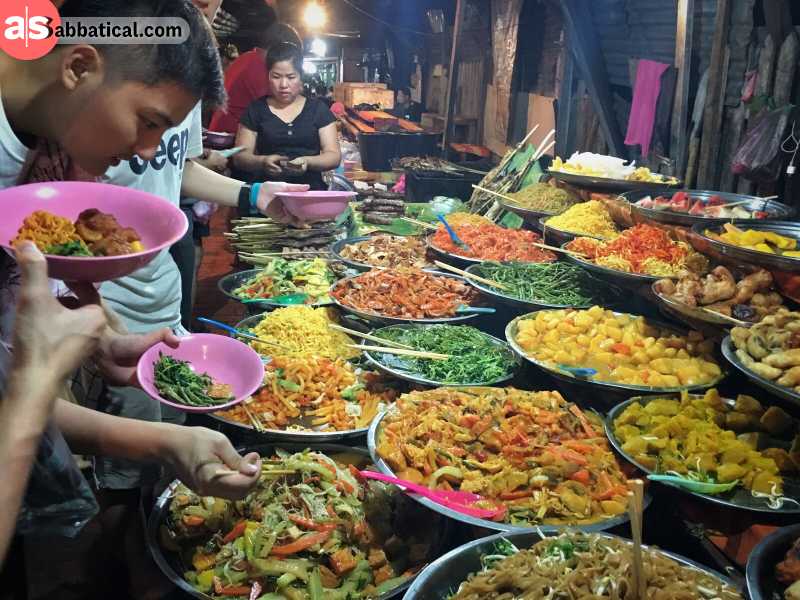
Although the Laotian Cuisine is often overlooked in favor of its neighbor, Thailand, and Vietnam, most of the Thai dishes actually originated from Laos. Thai dishes like papaya salad and sticky rice are actually a Lao staple.
During my motorbike trip around Laos, I was enjoying Lao cuisine and friendliness of the people!
It’s mainly because most of the northern parts of Thailand used to be a part of Laos. Thus, it’s not surprising why the Laos food culture is almost similar to that of the Thais, although the Laotian cuisines are generally made with different variations. Here are some of the Laos dishes that you should not miss when visiting the country:
Khao Jee Sandwich
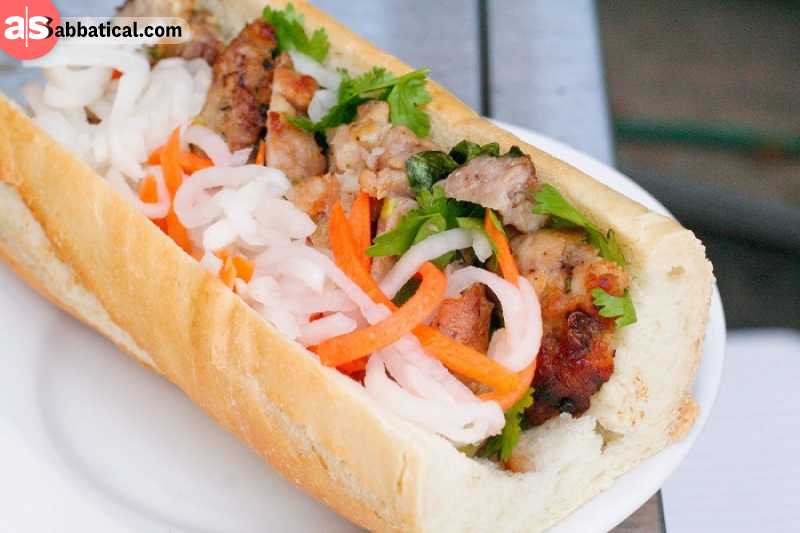
This dish is Lao’s version of Vietnamese Bahn Mi. It’s a French baguette that’s filled with carrots, tomatoes, lettuce, and some meat in the form of ham or luncheon meat. Served with a generous topping of chili garlic sauce, this delicious snack can be found in almost every street corner of Laos.
Khao Niao

This traditional sticky rice is popular among the Lao people. In fact, this dish is eaten several times a day. Usually served in a woven basket, the Khao Niao is a popular accompaniment to every Laotian meal.
Khao Piak Sen

This noodle soup is popular street food in Laos. It’s basically their own version of the Vietnamese Pho, which is made of rice noodles served with chicken, pork, and beef, along with a handful of vegetables. Locals would usually order it with a few innards like tongue, heart, and liver. If you’re adventurous enough, go ahead, and give it a try!
Laab Moo
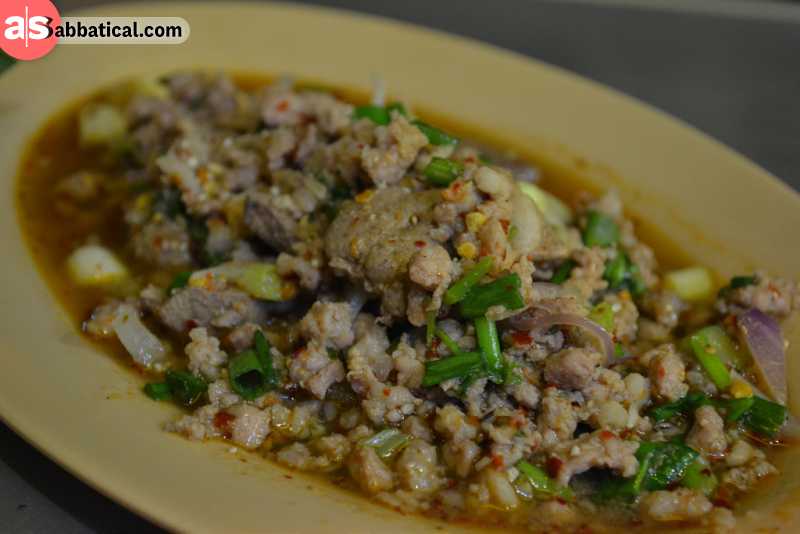
This is a minced meat salad that’s also popular in Thailand. This dish is made of minced meat that’s stir-fried and cooked with lots of chilies, lemon juice, ground rice, and fish sauce. Coriander and mint are also added to this flavorful dish, and it’s best eaten with the Khao Niao (sticky rice).
Mok Pa

This is a steamed fish cooked in banana leaves that is almost similar to Cambodia’s amok dish. This delicious dish is very flavorful as it’s cooked in kaffir lime leaves and added with lemongrass, fish sauce, and a generous amount of chilies! The fish is then wrapped in the lime leaves and steamed until cooked. Perhaps, the only difference of this dish from the amok in Cambodia is that amok is cooked with coconut milk.
Naem Khao Tod
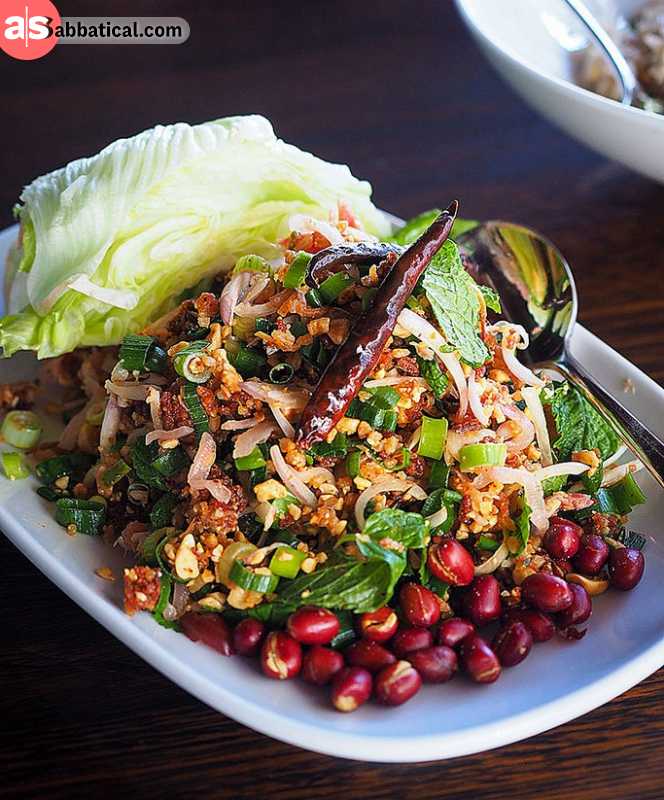
This is a crispy rice salad made of pork sausages, freshly grated coconut, peanuts, dried chili, and deep-fried rice balls. It’s traditionally eaten by filling a large piece of lettuce with a mixture of the flavorful ingredients.
Sai Oua

This smoky sausage is an everyday staple in the streets of Luang Prabang, although it can also be found almost everywhere in the country. The dish is made with ground pork that’s seasoned with lemongrass, fish sauce, ginger, lime, and garlic. It’s then dried up like a sausage and sold in the markets and streets.
Tam Mak Hoong

This is Lao’s version of Thailand’s papaya salad. This refreshing and flavorful salad is often served as a side dish to grilled meats. But unlike the Thai version, the tan mak hoong is made with shrimp paste, fish sauce, and lots of garlic, chili, and tomatoes.
Places to Visit in Laos

Despite being a small and landlocked country, Laos is actually home to some of the most beautiful places in Southeast Asia. Aside from the scenic mountains, Laos is also famous for its magnificent waterfalls, spectacular caves, and a wealth of historical sites.
Read more: Unknown Things To Do in Laos!
Here are some of the best places to visit in Laos:
Bolaven Plateau and Champasak

The Champasak Province is located in the southern part of Laos, and it’s the best place to visit if you want to witness nature at its best! The Bolaven Plateau is known for its majestic waterfalls while the Si Phan Don, also in Champasak, is a great place to visit if you want to experience a relaxing riverside vibe. Vat Phu, also in Champasak, is also worth a visit for its ancient temple ruins.
Huay Xai

This place is located between the border of Thailand and Laos and where most travelers would pass by when crossing from one country to the other. It’s also famous for the scenic river cruises at the Mekong River, where you can take the boat from Huang Xai going to Luang Prabang.
Luang Prabang
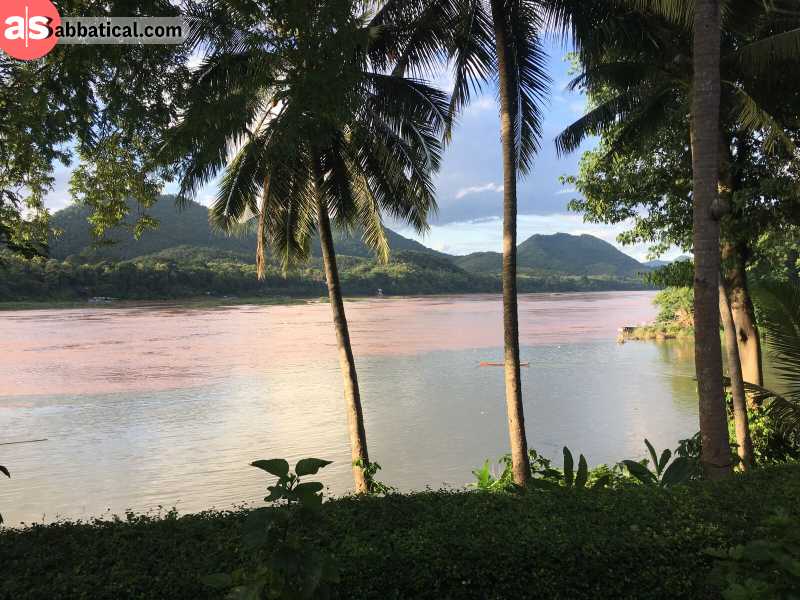
This laid-back town in the northern part of the country is a UNESCO World Heritage Site known for its French colonial buildings, magnificent temples, and beautiful riverside setting.
Read more: Some Things to Do Around Luang Prabang!
Luang Namtha
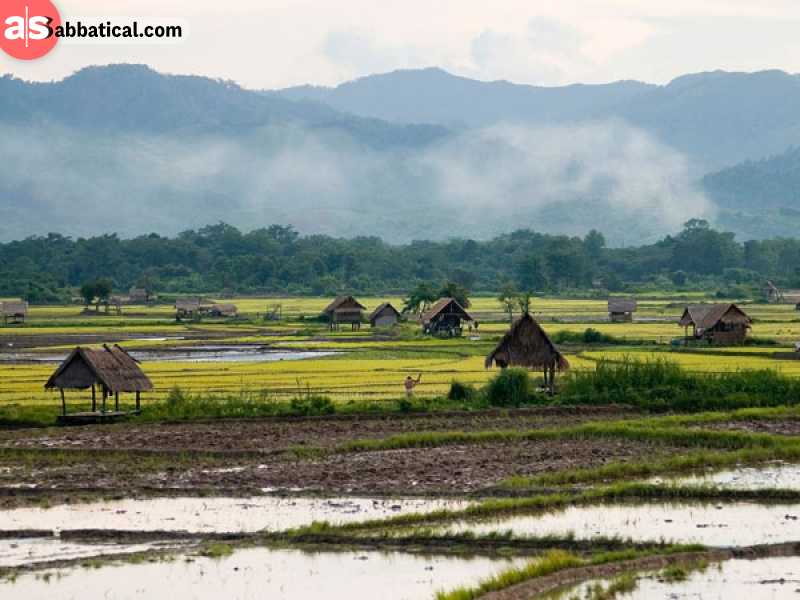
This is the largest city in Laos’ northwest region and is a popular jump-off point for those traveling to neighboring China . This is also a great spot for those who wish to trek since scenic mountains and rice fields surround the place. If trekking is not your cup of tea, you can always rent a bike and cycle your way.
. This is also a great spot for those who wish to trek since scenic mountains and rice fields surround the place. If trekking is not your cup of tea, you can always rent a bike and cycle your way.
Muang Ngoi and Nong Khiaw

If you wanted to go off-the-beaten-path on your trip to Laos, head to Nong Khiaw. It’s a great place to soak up the beauty of nature where the gigantic monolith karst cliffs surround scenic rice fields.
Vang Vieng
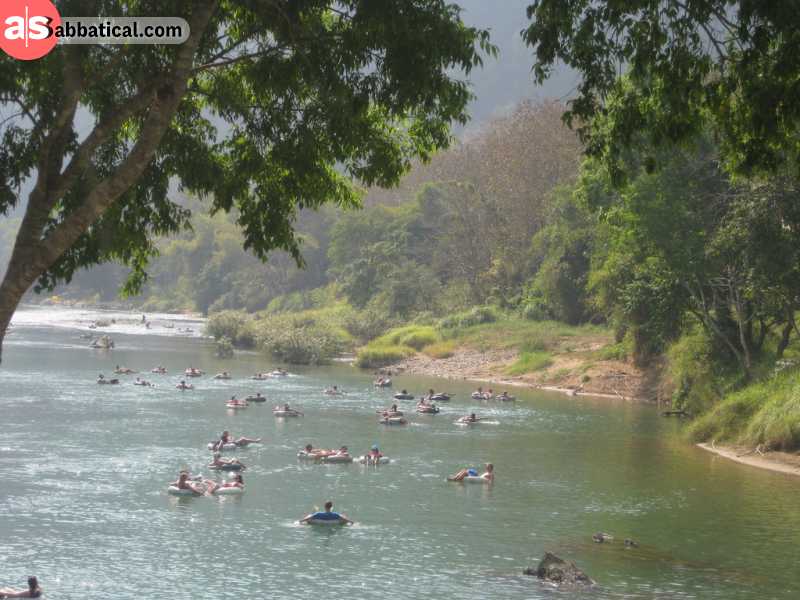
This party town is famous for backpackers who wanted to experience the town’s vibrant nightlife scene. One of the most popular activities in Vang Vieng is tubing down the Nam Song River where you can witness the lush jungle scenery as you traverse through the raging river.
Vientiane
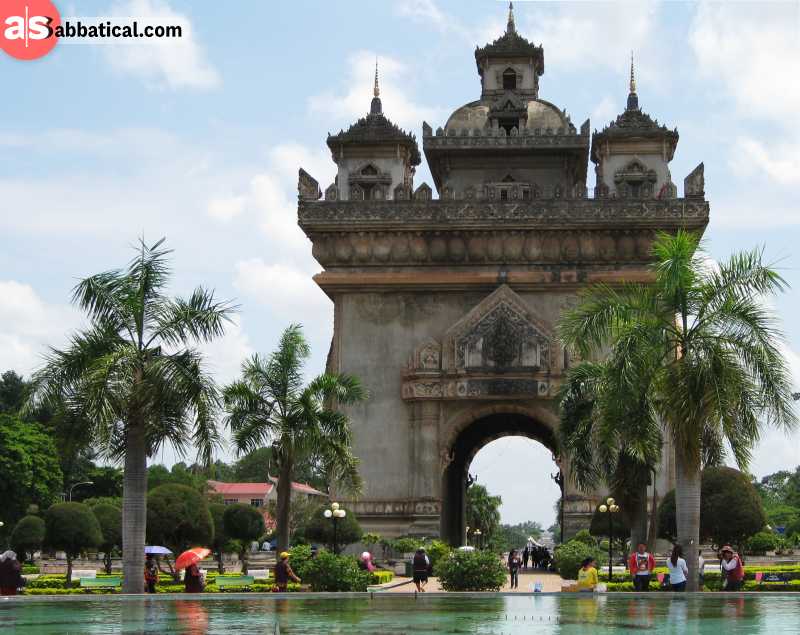
Lao’s charming capital city should not be missed during your trip to the country. Yet, despite it being a capital city, it’s not as busy as its neighboring Thai capital. The city has a very laid back feel that it feels like you’re just visiting a small town.
Read more: What To Do While in Vientiane?
There are plenty of interesting sights to discover in Vientiane, as a plethora of French colonial architecture surrounds the place. One of this is Patuxai, Lao’s version of Paris’ Arc de Triomphe.
Although Laos is greatly influenced by its neighboring countries of Vietnam and Thailand, the country has its own distinct appeal, something that you will only discover once you visit the country. Perhaps, the best thing about visiting Laos is that most of its places remain untouched by western commercialism, which is rampant in some other countries in the region.


